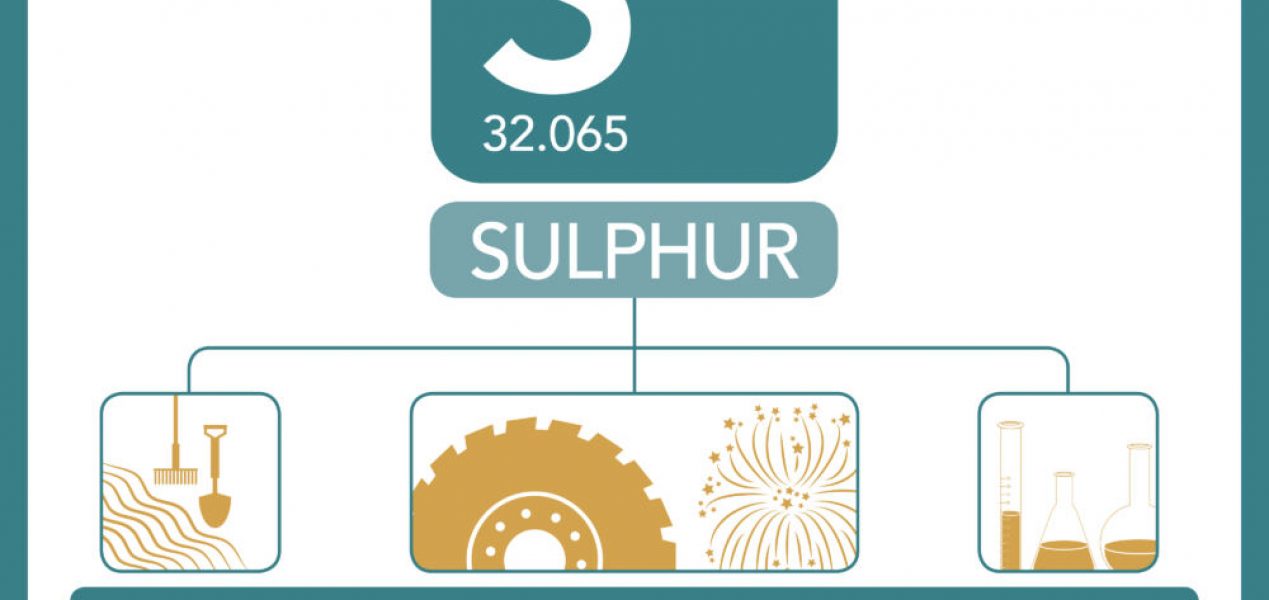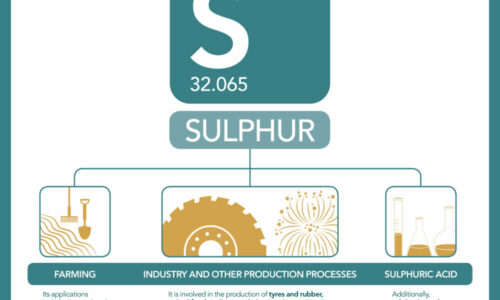This post, in celebration of the International Year of the Periodic Table, is dedicated to an old acquaintance of humankind, sulphur. Even in prehistoric times, the very first humans used this chemical element, known by the symbol S, as a pigment for their cave paintings. Its presence has been constant throughout the years: Homer described how sulphur was commonly used to control pests in a text some 2,800 years old; in the XII century, the Chinese used it to create gunpowder; alchemists in the Middle Ages discovered the possibility of combining it with mercury…
Nowadays, it is used for a myriad of processes. “Among its applications, notable uses are those related to agriculture, including as a fungicide or acaricide, and for its nutritional or soil fertilising activity; in relation to industry, it is used for the production of tyres or rubber, animal food, or pyrotecyhnics”, explains Pere Rullan, product manager at Grupo Barcelonesa.
Other important uses can be found in the world of oil refining, pigment production, steel processing, the extraction of non-ferrous metals, or in the production of batteries, laxatives, matches, and insecticides. It is used to bleach paper, is used at water treatment plants, in the pool sector as a pH reducer, for manufacturing glass, and as anti-caking, coagulant, drying, or viscosity regulating agents. The list of applications is never-ending.
“Sulphur is an active element that directly combines with the majority of known elements”, Rullan points out, a feature that partially explains the long list of uses for the element. Another common explanation is its abundant nature: “It’s one of the top 10 most abundant elements in the universe”, states the Grupo Barcelonesa product manager. “There is sulphur in the atmosphere, the ocean, the earth’s crust, and the human body”, he adds. The expert explains how sulphur is considered an “essential chemical element” and, therefore, is indispensable not only to industry, “but to life and the survival of multiple organisms”.
It is found in large quantities combined in the form of sulphurs (pyrite, galena) and sulphates (gypsum). In its natural form, we can find it close to hot springs, volcanic areas, and in cinnabar, galena, sphalerite, or stibnite mines. It is extracted using the Frasch process, a method that consists of injecting superheated water vapour into the ground to melt the sulphur which is subsequently pumped to the outside using compressed air. It can also be obtained by separating it from natural gas, coal, and oil.
Because of its wide range of uses, it’s hard to imagine the industry without sulphur. Its abundance, ease of extraction, and ability to be directly combined with most known elements has transformed it into a basic element.
Barcelonesa has a wide range of sulphur derivative products, particularly sulphuric acid and its salts, as well as a wide range of sulphates: aluminium, calcium, magnesium, sodium, ammonium, copper, and zinc.


